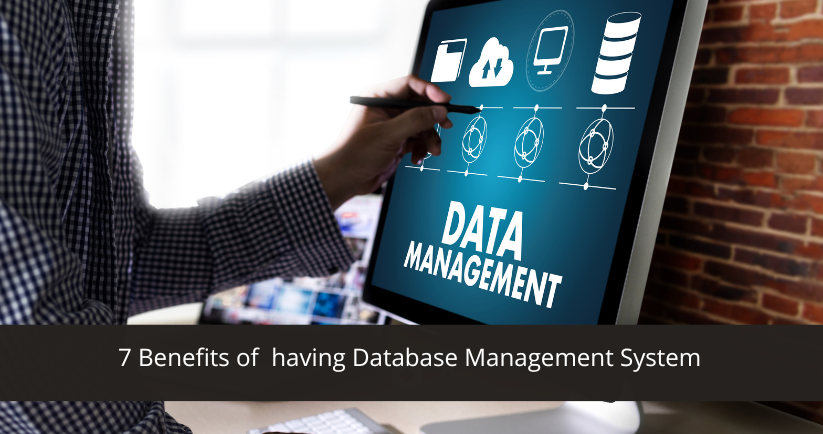Keeping employee data safe and secure is one of the key tasks throughout the recruitment cycle, performance management, storing financial records, onboarding, offboarding, etc. It becomes challenging if they need vital employee information.
When you handle massive amounts of employee data, it’s easy to lose sight of what’s essential for your organization and how to leverage it to move your company forward. An Employee database management system software is a one-time solution for the entire employee management process.
What is Employee Database Management?
The collection of data, analyzing them and storing them, and lastly, maintaining all the critical information concerned with the organizations’ employees is known as the Employee database management system. It is usually cloud-based or client-server-based software. With employee database management, it becomes easier to keep track of information like attendance/leave, salary, and performance and sync it to the business platform. For every HR, it is a mandatory tool to streamline the entire HR administrative task easily.
What are the benefits of an Employee Database Management System?
The employee database management platform is a one-time solution for the HR daily task. It’s essential in today’s cloud-based company culture. Let’s go through the benefits of the employee data management system.
Assist in Company Collaboration
Employee database management is beyond the basic storage of HR hiring data and salary information. It is all in one employee directory. The employee database management system helps the HRs promote enhanced communication and collaboration within teams.
Employees can easily share numerous data like certifications, known languages, projects, and more with the Employee database management software. They can wish their teammates on their special days. Using the employee database management system, employees can raise tickets for issues with the IT team anytime, anywhere. It builds trust and helps in collaboration within the workplace.
Also Read: Artificial Intelligence the future of Employee Management
Enhancing Security and Confidentiality
Every single piece of information of an employee is stored in the employee database management system. So, data security in this software should be taken care of strictly as data leaks and data theft hamper business productivity and company growth. With an efficient employee database management system, the employee can protect information from public viewing.
Other data-related benefits are the following,
HR Data Analytics & Metrics
Having an excellent employee database management system is not only good for the employee, but it’s also a gift for HR. HR departments are responsible for turning data into insightful information and solving business challenges. They often face management issues, low employee engagement, payroll crises, etc. A proper employee database management system helps HRs streamline HR data analytics and management.
Reduced Data Inconsistency
Often HR faces challenges with random data inconsistency, like when an employee’s name is primarily written as ‘Niana Joshi’ on the appointment letter and often misspelt as ‘Niana c. Joshi’ at the time of entering the employee management system. Choosing an employee database management system can be a great option for minimizing data inconsistency.
Quick data Access
The Database management system (DBMS) helps answer database queries quickly, leading to faster and more accurate data access. With the software end user can easily access finalized data and proceed to the faster sales cycle. It streamlines the entire data processing and maintenance.
Data abstraction
Employee database management system enables data abstraction, which helps the employees to understand and work in the software efficiently. Data abstraction is creating data types that hide all the details of multiple backend processes from the employees. So the employee can easily interact with the system.
Reduction in data Redundancy
Employee database management system has features that help to prevent inputting of duplicate items in the database. e.g., if multiple inputs of the same employee details are in different rows, the employee database management system automatically deletes the duplicate data.
Also Read: What is Document Management System? Top 5 Benefits of DMS
7 steps to integrate your employee database software
Integrating an effective employee database management software is an easy task to do. Follow these steps to get started:
Choose the relevant Employee Management System
Research what you require before integrating an EDMS with what you want to do with your system’s data will help guide you in selecting the right solution. You can accomplish some activities in your employee database management system are included,
- For accurate reporting every time.
- Automating every HR process.
- Integrating innovative and quick payroll processes.
- Detailed tracking of HR metrics
- Smooth access anytime, anywhere
Identify your specific data requirements
After walking through the macro objective of choosing the employee database management system, it is essential to determine the elements you need to include in your database. Let’s discuss what activities you can integrate into your database management system.
- Employee Recruitment and Onboarding
- Training and development
- Performance and Attendance tracking
- Engagement and Retention
- Off-boarding
Involve IT specialist
Although HR can efficiently operate the database management system, still involvement of IT specialists is crucial for database maintenance, new data handling, troubleshooting, data configuration, and more. Besides IT, you can provide the admin authority to the payroll manager, stakeholders or others finance specialists.
Evaluate the advantages you achieve
It is time to review the EDMS to see whether it works for you and meets your goal. Let’s discuss some employee data solutions with the following characteristics:
- Cloud-based software with 24/7 accessibility at anytime, anywhere.
- Support for implementation and daily work.
- Modules to support the entire employee lifecycle.
- Navigable reporting and dashboards for better decision-making.
Gather relevant policies and information.
After completing the evaluation, you need to aggregate your policies and employee data and include them in your database. You can also capture data from previous payroll system.
Train and empower employees
You need more than just integrating new software; after successful integration, you must train your employees to operate the new database system efficiently. Proper training can help employees’ self-servicing. They will get used to accessing the self-service portal rather than relying on the old HR process.
Innovative ways to leverage employee data
After updating new data, it is time to use and report on it. For example, after integrating the new payroll features, you need to learn how to leverage employee data and see the impact of your various HR programs and activities.








